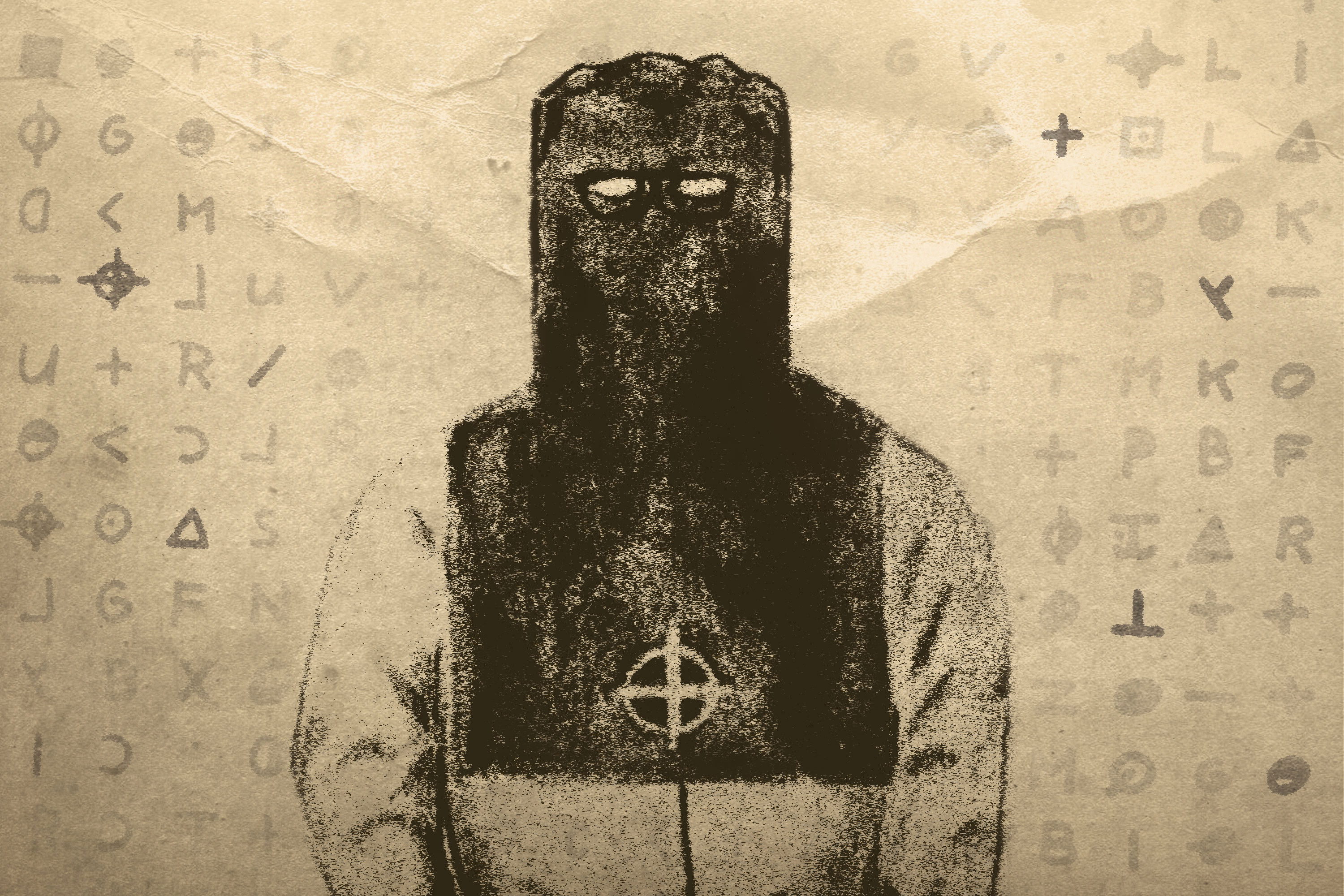
The world is filled with mysteries, some of which continue to baffle investigators and intrigue the public to this day. In this article, we will delve into the top unsolved crimes in the world, exploring the eerie details, investigations, and theories surrounding these enigmatic cases.
Good mysteries are enjoyed by anyone. What about good unsolved mysteries that are genuinely terrifying but don't have a satisfactory conclusion like Scooby-Doo removing the culprit's mask?
These unsolved crimes, such as the mystery surrounding JonBenet Ramsey and the Jack the Ripper killings, have shaken our history textbooks for the better part of a century. These are all puzzling, peculiar, unsettling, and frustratingly unsolvable cases.
When you read this compilation of the most bizarre unsolved mysteries in history, get ready for the hair to rise up on the back of your neck. Be careful when reading some of these unsolved mysteries because they feature severe violence.
From perplexing disappearances to high-profile heists, these unsolved mysteries have left a lasting mark on the history of crime.
The Disappearance Of Malaysia Airlines Flight MH370
The disappearance of Malaysia Airlines Flight MH370 remains one of the most perplexing mysteries in aviation history. On that fateful night of March 8, 2014, the Boeing 777-200ER took off from Kuala Lumpur International Airport bound for Beijing Capital International Airport, carrying 239 passengers and crew members. However, somewhere over the southern Indian Ocean, the plane vanished without a trace.
The Vanishing Act
The flight was uneventful until it reached the boundary between Malaysian and Vietnamese air traffic control, at which point all communication with the aircraft was abruptly lost. The plane's transponder, which transmits location and identification data, was deliberately disabled, leaving radar operators with no way to track its movements accurately. This sudden disappearance sent shockwaves around the world and initiated one of the largest and most complex search efforts in aviation history.
The Search And False Leads
The initial search for MH370 focused on the South China Sea, but as evidence trickled in, it became evident that the aircraft had taken a different, unexpected trajectory. The search area shifted to the southern Indian Ocean, where satellite data indicated that the plane's last known position was.
Over the following months, various debris pieces from the aircraft were found washed ashore on distant islands, providing some confirmation that the plane had indeed crashed in the southern Indian Ocean. However, the main wreckage, including the flight data recorder and cockpit voice recorder (commonly referred to as the black boxes), remained elusive.
Theories And Speculation
The disappearance of MH370 has given rise to numerous theories and speculations, ranging from mechanical failure to pilot suicide and even hijacking by a third party. The possibility of pilot involvement received significant attention, with scrutiny falling on Captain Zaharie Ahmad Shah and First Officer Fariq Abdul Hamid. Investigators combed through their backgrounds, but no conclusive evidence implicating them was found.
Another theory centers on the cargo of lithium-ion batteries in the cargo hold, suggesting that a fire caused by the batteries could have incapacitated the crew and led to the plane's loss of control. However, this theory lacks definitive evidence to support it.
The Zodiac Killer
The Zodiac Killer, a notorious serial murderer who haunted Northern California during the late 1960s and early 1970s, remains one of the most infamous unsolved mysteries in American criminal history.
At least five deaths in Northern California in 1968 and 1969 are directly attributed to the self-described Zodiac Killer; two more victims survived despite suffering terrible injuries. He might have been involved in additional homicides, though.
From 1969 until 1974, he wrote letters to local media taunting and threatening the police before unexpectedly stopping. He claimed to have slain as many as 37 persons in that correspondence.
No one was ever apprehended for the atrocities, and the case is still open despite extensive investigations and a variety of ideas on the identity of the culprit. Numerous books and films have explored the mystery surrounding the killings, notably the critically acclaimed 2007 film Zodiac by filmmaker David Fincher.
This enigmatic killer, who claimed multiple victims, taunted law enforcement and the public with cryptic letters, ciphers, and a disturbing signature.
The Gruesome Reign Of Terror
The Zodiac Killer is believed to have committed a series of murders beginning in the late 1960s. His known victims include young couples who were attacked while parked in remote areas. The killer often approached the victims' cars, brandishing a weapon, and forced them out before opening fire.
The first confirmed victims of the Zodiac Killer were high school students Betty Lou Jensen and David Faraday, who were shot to death on December 20, 1968, near Vallejo, California. The killer continued to strike, leaving a trail of terror in his wake.
Cryptic Letters And Ciphers
What sets the Zodiac Killer apart from other criminals is his penchant for taunting law enforcement and the media. He sent a series of cryptic letters to local newspapers, including the San Francisco Chronicle, detailing his crimes and boasting about the pleasure he derived from killing. Some of these letters contained ciphers that he challenged readers to decipher.
The most infamous of these ciphers, known as the "340 Cipher," remained unsolved for over 50 years until a code-breaking team cracked it in December 2020. While the deciphered message did not provide a definitive identity for the killer, it continued to fuel speculation and investigations.
The Hunt For The Killer
Law enforcement agencies, including the San Francisco Police Department and the Napa County Sheriff's Office, worked tirelessly to apprehend the Zodiac Killer. They interviewed suspects, explored leads, and even conducted sting operations to lure the killer into the open, but their efforts were largely in vain.
One of the prime suspects in the case was Arthur Leigh Allen, a convicted child molester and felon with a history of violence. However, Allen died in 1992, and no concrete evidence linking him to the Zodiac killings was ever found.
The Unsolved Mystery
The identity of the Zodiac Killer remains a subject of speculation and debate. The killer was never caught or positively identified, leaving the case unsolved to this day. The question of whether the killer is still alive or deceased is also a matter of mystery.
Several books, documentaries, and amateur sleuths have dedicated themselves to unmasking the Zodiac Killer's identity. Numerous theories have emerged over the years, pointing fingers at various individuals, but none have been definitively proven.
The Black Dahlia Murder
The Black Dahlia murder is a name that has echoed through the decades, conjuring images of a gruesome and unsolved crime that has become an indelible part of Hollywood's dark history. The victim, Elizabeth Short, was a young and aspiring actress whose life was tragically cut short in one of the most brutal and mysterious murders of the 20th century.
Elizabeth Short's body was discovered at Leimert Park in Los Angeles, California, on January 15, 1947. a woman who thought she noticed an abandoned mannequin while strolling through a park with her two-year-old kid. She grabbed her daughter and quickly understood that the body was a corpse before racing to the closest phone to notify the police.
The blood had been drained from Elizabeth Short's body, which had been split in half at the waist. She had the "Joker smile" because the corners of her mouth and ears had been surgically removed. Whole chunks of skin had been taken, leaving her breast and thighs covered in scars and bruises. An autopsy revealed that she had died as a result of wounds to her skull and lacerations from blows to her face.
The Investigation - A Web Of Intrigue
The Black Dahlia murder case quickly became one of the highest-profile investigations in Los Angeles history. The LAPD was inundated with tips and leads, but the true identity of Short's killer remained elusive. As detectives delved into Short's past, they encountered a maze of potential suspects, including former acquaintances, lovers, and even individuals who claimed to have encountered her in the days leading up to her death.
One particularly eerie aspect of the case was the anonymous letters sent to local newspapers and police, purporting to be from the killer. These letters taunted investigators and promised to reveal the killer's identity, but they only added to the mystique surrounding the case.
The Suspects - A Gallery Of Shadows
The list of suspects in the Black Dahlia case is long and filled with intriguing characters. From shady acquaintances to wealthy socialites, each person who crossed paths with Elizabeth Short during her brief life became a potential suspect. Among the most notorious was Dr. George Hodel, a prominent physician whose son, Steve Hodel, would later claim was responsible for Short's murder.
Despite Steve Hodel's compelling case against his father, the evidence remains circumstantial, and no definitive link to the crime has been established.
The Legacy - From Tragedy To Legend
The Black Dahlia murder has transcended the realm of true crime, becoming a symbol of Hollywood's dark underbelly. Elizabeth Short's story has been immortalized in numerous books, films, and documentaries, each attempting to shed light on the mystery surrounding her untimely death. From James Ellroy's fictionalized account in the novel "The Black Dahlia" to Brian De Palma's film adaptation, the case continues to captivate audiences.
The DB Cooper Hijacking - Top Unsolved Crimes In The World
The DB Cooper hijacking remains one of the most daring and perplexing unsolved crimes in American history.
On the night before Thanksgiving in 1971, Dan "D.B." Cooper rose to fame. Police have not located him since that evening when he leaped from an airplane while it was in flight, either dead or alive.
On the evening of November 24, 1971, a man using the alias "Dan Cooper" hijacked a commercial airplane, extorted a ransom, and then vanished into thin air, leaving a trail of questions that have continued to baffle investigators and intrigue the public for decades.
The Hijacking
The hijacking began when Dan Cooper boarded Northwest Orient Airlines Flight 305 in Portland, Oregon. He was described as a middle-aged man, well-dressed and calm. Once the plane was in the air, Cooper handed a note to a flight attendant, claiming he had a bomb in his briefcase and was taking control of the aircraft.
Cooper instructed the flight crew to follow his demands, which included obtaining $200,000 in ransom money and four parachutes. The plane was then redirected to Seattle-Tacoma International Airport, where the authorities complied with Cooper's demands by delivering the money and parachute to the plane.
The Daring Escape
After receiving the ransom and parachutes, Cooper allowed the 36 passengers to disembark in Seattle, keeping a small crew on board. He then directed the remaining crew to fly the plane to Mexico City, with a few crucial conditions: the plane had to maintain a low altitude, and a slow speed, and the landing gear had to remain extended.
Somewhere over the rugged and densely forested terrain of southwestern Washington state, Cooper made his move. He activated the aft stairway, creating a slipstream, and parachuted into the night, disappearing into the wilderness below.
The Mysterious Manhunt
The authorities launched a massive manhunt for DB Cooper, combing the area where he was believed to have landed. Despite intensive efforts, they found little more than a few scattered clues. In 1980, a young boy found a rotting package filled with $5,800 in cash along the Columbia River, which was confirmed to be part of the ransom money. However, the discovery did little to shed light on Cooper's fate.
Over the years, various theories emerged about what happened to DB Cooper after his daring parachute jump. Some believe he died upon landing in the rugged wilderness, while others speculate that he survived and vanished into anonymity.
The Gardner Museum Heist
The Gardner Museum heist, also known as the Isabella Stewart Gardner Museum theft, is a high-profile art theft that occurred in the early hours of March 18, 1990, in Boston, Massachusetts. This audacious robbery is one of the largest and most famous art heists in history, leaving a trail of unsolved mysteries and missing masterpieces in its wake.
The Heist
On the night of the heist, two men dressed as police officers gained entry to the Isabella Stewart Gardner Museum by posing as security personnel responding to a disturbance call. Once inside, they subdued the museum's security guards, tying them up and handcuffing them in the basement.
Over the course of the next 81 minutes, the thieves proceeded to steal 13 priceless works of art, including paintings by Vermeer, Rembrandt, and Degas, as well as a Chinese beaker from the Shang dynasty. The stolen artwork was valued at over $500 million.
The Investigation
The FBI and local law enforcement agencies launched a massive investigation into the Gardner Museum heist, but progress has been slow, and the stolen artwork has not been recovered. Over the years, there have been various leads and suspects, but none have resulted in a successful resolution of the case.
One theory suggests that the Irish Republican Army (IRA) may have been involved in the theft, possibly using the stolen artwork as a means of raising funds. However, this theory lacks conclusive evidence.
The Empty Reward
In an effort to recover the stolen art, the Isabella Stewart Gardner Museum has offered a substantial reward of $10 million for information leading to the recovery of the stolen masterpieces. Despite this enticing incentive, the artwork remains missing, and the mystery endures.
The Legacy
The Gardner Museum heist has left an indelible mark on the world of art and crime. The missing masterpieces are not only valuable works of art but also pieces of cultural heritage that hold a special place in the art world. Their absence serves as a constant reminder of the audacious theft that continues to baffle investigators and art enthusiasts alike.
Over the years, various theories and speculations have emerged about the whereabouts of the stolen artwork, including claims of secret hideaways and underground art markets. However, none of these theories have led to the recovery of the missing pieces.
The Axeman Of New Orleans
The Axeman of New Orleans is a chilling and enigmatic figure in the annals of criminal history. Operating in the early 20th century, this serial killer left a trail of gruesome murders and unsolved mysteries in his wake, terrorizing the city of New Orleans like never before.
The Grisly Murders
The Axeman's reign of terror began in 1918 and continued until 1919. His modus operandi involved breaking into the homes of his victims, most of whom were Italian immigrants, and brutally attacking them with an axe or another sharp instrument. The murders were characterized by their brutality, with victims often suffering multiple severe blows to the head.
The randomness and brutality of the attacks struck fear into the hearts of New Orleans residents, who were left to wonder when and where the Axeman would strike next.
The Mysterious Killer's Letters
What made the Axeman even more terrifying was his penchant for writing letters. In March 1919, an anonymous letter purportedly from the Axeman was published in newspapers. In it, the writer claimed to be a supernatural being, stating, "I am not a human being, but a spirit and a demon from the hottest hell."
The letter declared that the Axeman would spare anyone who was playing jazz music in their homes on the night of March 19, 1919. That night, the city of New Orleans was alive with the sound of jazz, as people played music in their homes or gathered in clubs. Remarkably, there were no reported attacks that night, as if the Axeman had kept his promise.
The Unidentified Killer
Despite widespread fear and attempts to capture the Axeman, he was never apprehended or identified. Theories about the identity of the killer abounded, with some suggesting that he may have been a deranged individual with a personal vendetta against Italian immigrants, while others believed he was simply a sadistic psychopath.
Unsolved Mysteries
The Axeman's identity, motive, and ultimate fate remain unsolved mysteries. As quickly as he appeared, the Axeman disappeared from the public eye, leaving behind a legacy of fear and uncertainty. His crimes have inspired books, documentaries, and even fictionalized accounts in popular culture.
The Keddie Murders
The Keddie Murders, a horrifying and unsolved crime that took place in a quiet California mountain town in 1981, is a haunting mystery that has puzzled investigators for decades.
In the Californian village of Keddie in 1981, a cabin was the scene of four horrifying murders. The Keddie killings, which have been the subject of a thorough investigation but are still unsolved, are said to be Plumas County's biggest criminal case.
There have been a number of suspects, and due to a botched police investigation, the culprits are either still at large or have since passed away after the events that occurred 40 years ago.
This gruesome event, which claimed the lives of three individuals, shocked the community and left behind more questions than answers.
The Victims
On the night of April 11, 1981, the victims—Sue Sharp, a single mother, and her two children, John and Dana—were brutally murdered in Cabin 28 of the Keddie Resort in Keddie, California. Sue's two younger children, who were also present in the cabin, were unharmed. The crime scene was gruesome, with the victims bound, bludgeoned, and stabbed.
The Crime Scene
The scene was discovered the following morning by Sue Sharp's daughter, Sheila, who had spent the night at a neighbor's house. When she returned to Cabin 28, she stumbled upon the horrific crime scene. Distraught and terrified, Sheila immediately alerted the authorities.
The Investigation
The investigation into the Keddie Murders was launched immediately, and the crime scene was thoroughly examined. Despite extensive efforts by law enforcement, the case remains unsolved, leaving many questions about the identity of the perpetrator and the motive behind the crime.
The Mysterious Phone Call
One puzzling aspect of the case is a mysterious phone call that was received at the Keddie Resort front desk on the night of the murders. The caller stated that he had information about the crime but would only provide it to the sheriff. The call was never traced, and the caller's identity remains unknown.
The Theories
Over the years, various theories and suspects have been considered in the Keddie Murders case. Some believe that the murders may have been related to drug trafficking in the area, while others point to personal conflicts or disputes involving the victims.
One of the more intriguing theories suggests a connection between the murders and an alleged feud between individuals with ties to law enforcement. Some believe that the crime was covered up, preventing a thorough investigation.
Unsolved Mystery
The Keddie Murders case remains open and continues to be a source of frustration and fascination for both law enforcement and amateur sleuths. Despite the passage of time, the families of the victims, as well as the community of Keddie, still seek closure and justice for the horrific crimes that shattered their lives.
The Somerton Man
The Somerton Man, also known as the Tamam Shud case, is one of the most perplexing mysteries in Australian criminal history. This unidentified man was found deceased on Somerton Beach near Adelaide, South Australia, in December 1948, and his death remains an enigma that has baffled investigators, codebreakers, and amateur sleuths for decades.
The Discovery Of The Body
On the morning of December 1, 1948, a couple discovered the lifeless body of a man lying propped up against a seawall on Somerton Beach. The man appeared to be in good physical condition and was dressed in a suit and tie, but all labels had been removed from his clothing. Despite an exhaustive search, no identification or personal belongings were found on him.
The Mystery Of The Code
In a hidden pocket of the man's pants, investigators discovered a small scrap of paper with the words "Tamam Shud" written on it. This Persian phrase, meaning "ended" or "finished," was torn from a book of poetry, and the book itself was later discovered in a nearby car.
Inside the book, investigators found a series of seemingly random letters, leading them to believe it was a code. Despite extensive efforts by codebreakers and cryptographers, the meaning of the code and its relevance to the case remain unsolved mysteries.
The Investigation
The investigation into the Somerton Man's identity and cause of death revealed several puzzling details. An autopsy found no signs of poison, and the absence of identification made it difficult to establish who he was. Despite the absence of any apparent trauma, some experts speculated that the man had been poisoned with an untraceable substance.
The Mysterious Luggage
Another baffling aspect of the case was the discovery of a suitcase in a nearby train station, believed to belong to the Somerton Man. Inside the suitcase, investigators found clothing with all labels removed, and a pair of scissors with sharpened tips. The suitcase also contained a small electrical tool, but no clues as to the man's identity.
The Theories
Over the years, numerous theories have emerged about the identity and fate of the Somerton Man. Some believe he was a Cold War spy, and the coded message was related to espionage. Others suggest that he may have been involved in criminal activities or had a secret lover. Despite these theories, no definitive answers have been found.
The Circleville Letters
The Circleville Letters is a chilling and unresolved mystery that unfolded in and around Circleville, Ohio, during the late 1970s and early 1980s. This bizarre and unsettling case revolves around anonymous, threatening letters sent to various individuals, including school bus drivers, law enforcement officials, and residents of the small town, leading to a series of tragic events and a persistent mystery.
The Letters Begin
The strange saga of the Circleville Letters began in 1976 when Mary Gillespie, a school bus driver in Circleville, received a letter containing disturbing accusations and threats. The letter accused her of having an affair with the school superintendent and warned her to end the relationship. If she didn't comply, dire consequences were promised.
Tragedy Strikes
In 1977, the Circleville Letters took a tragic turn when Ron Gillespie was killed in a car crash. Authorities ruled it an accident, but Mary believed her husband's death was related to the threatening letters. She continued to receive letters accusing her of Ron's murder, despite the ongoing investigation.
The Letter Writer's Boldness
The anonymous writer of the Circleville Letters seemed to relish the game of cat and mouse. In one particularly audacious act, they placed a large sign along Mary's bus route, accusing her of Ron's murder and other unspecified crimes. The sign was booby-trapped, rigged to spray a chemical irritant when touched.
The Investigation
Despite the efforts of law enforcement and the involvement of private investigators, the identity of the Circleville Letter writer remained unknown. Handwriting analysis and linguistic experts were consulted, but no concrete leads were established.
A Final Twist
The Circleville Letters case took a dramatic turn in 1983 when Paul Freshour, Mary Gillespie's former brother-in-law, was arrested and convicted for the attempted murder of the Circleville Letter writer. Freshour had been a suspect due to a handwriting match, but the evidence against him was circumstantial at best.
The Murder Of JonBenét Ramsey
The murder of JonBenét Ramsey is a heart-wrenching and enduring mystery that has captivated the world since it unfolded on the morning of December 26, 1996, in Boulder, Colorado. The murder of the six-year-old beauty queen and the subsequent investigation left a trail of questions, suspicions, and unsolved mysteries that continue to haunt both the Ramsey family and the public.
The Discovery
The tragedy began when Patsy Ramsey, JonBenét's mother, made a frantic 911 call to report that her daughter had been kidnapped. She found a ransom note demanding $118,000 in the family's home. However, the situation took a horrifying turn when, hours later, JonBenét's lifeless body was discovered in the basement of the house.
The Investigation
The investigation into JonBenét Ramsey's murder was marred by controversy from the outset. The crime scene was not properly secured, and potential evidence was compromised. Suspicion initially fell on the Ramsey family, and they faced intense media scrutiny and public suspicion.
One of the most puzzling aspects of the case was the ransom note, which was unusually long and detailed. Handwriting analysis could not definitively link it to any family member, but many found it suspicious.
The Autopsy And Controversial Findings
The autopsy report revealed that JonBenét had died of strangulation and a skull fracture. It also indicated signs of sexual assault. However, there was no clear evidence of a break-in, and the source of the ligature used in the strangulation was never definitively established.
The Role Of The Media
The murder of JonBenét Ramsey became a media sensation, with extensive coverage on television, newspapers, and magazines. This intense media scrutiny only deepened the mystery and fueled speculation about the case.
The Suspects
The Ramsey family, particularly JonBenét's parents, John and Patsy Ramsey, came under heavy suspicion early in the investigation. They maintained their innocence and insisted that an intruder was responsible for their daughter's death. The case had numerous suspects, including individuals with access to the Ramsey home, but no one was charged.
The Grand Jury And Lack Of Indictment
In 1999, a grand jury was convened to review the evidence in the case. However, despite the lengthy investigation, the grand jury did not return any indictments. The prosecutor at the time, Alex Hunter, cited insufficient evidence to proceed with charges.
Ongoing Speculation
The JonBenét Ramsey case remains unsolved, and theories about the identity of the killer continue to circulate. Some believe that an intruder or an unknown assailant was responsible, while others suspect a family member.
The Legacy
The murder of JonBenét Ramsey left an indelible mark on the world of true crime and has been the subject of numerous books, documentaries, and television specials. The case remains a haunting reminder of the complexities of unsolved mysteries in the realm of crime.
FAQs
What Is The Status Of The Infamous "D.B. Cooper" Skyjacking Case?
The D.B. Cooper case remains unsolved, with no conclusive evidence of the hijacker's identity or whereabouts.
Can You Tell Me About The Ongoing Investigation Into The Disappearance Of Malaysia Airlines Flight MH370?
The search for Malaysia Airlines Flight MH370 is still ongoing, but the plane's exact location and the circumstances of its disappearance remain unknown.
What Is The Latest Development In The Investigation Of The Zodiac Killer?
The Zodiac Killer case remains unsolved, with no recent breakthroughs in identifying the serial killer.
Are There Any New Leads In The Investigation Of The Black Dahlia Murder?
The Black Dahlia murder case remains unsolved, with no recent significant leads or developments.
Is There Any New Information Regarding The Gardner Museum Heist And The Missing Artwork?
The Gardner Museum heist remains unsolved, and the stolen artwork has not been recovered. There have been no recent breakthroughs in the case.
Conclusion
The world is no stranger to enduring mysteries that continue to captivate and perplex investigators and the public alike.
The top unsolved crimes in the world, including the likes of the D.B. Cooper skyjacking, the disappearance of Malaysia Airlines Flight MH370, the enigma of the Zodiac Killer, the gruesome Black Dahlia murder, and the mysterious Gardner Museum heist, serve as stark reminders of the enduring allure and complexity of unsolved mysteries in the realm of crime.
Despite the passage of time and countless investigative efforts, these cases remain open, leaving us with unanswered questions and an unwavering fascination for the unknown.




